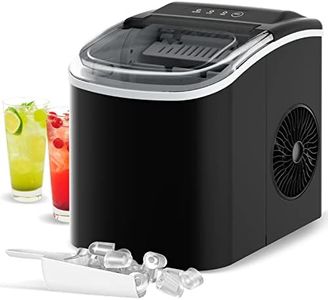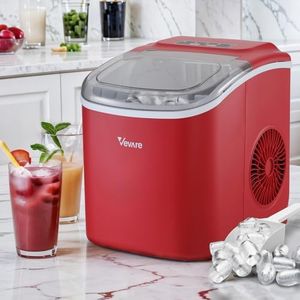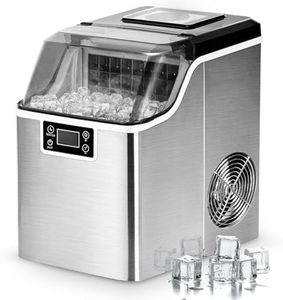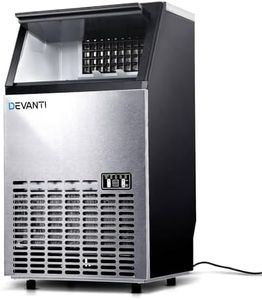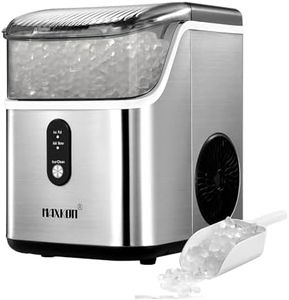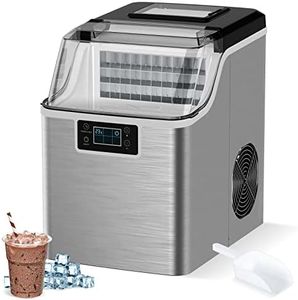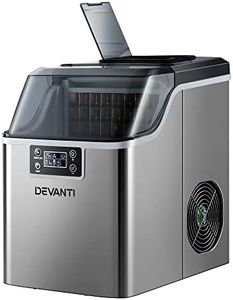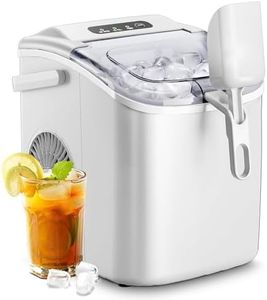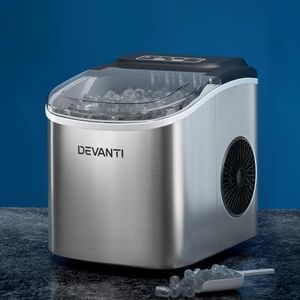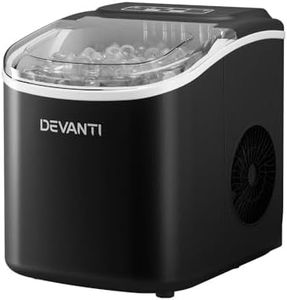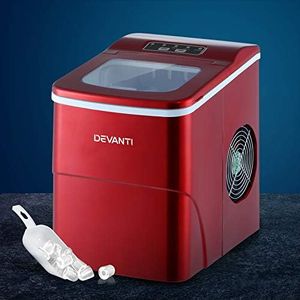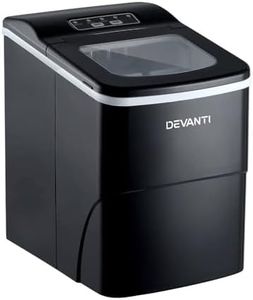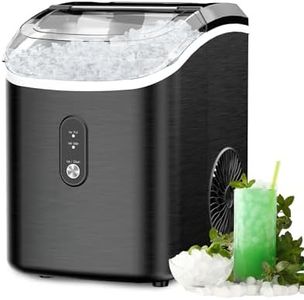We Use CookiesWe use cookies to enhance the security, performance,
functionality and for analytical and promotional activities. By continuing to browse this site you
are agreeing to our privacy policy
10 Best small ice makers
From leading brands and best sellers available on the web.Buying Guide for the Best small ice makers
When choosing a small ice maker, it's important to focus on what matches your lifestyle and intended use. Whether you're planning for home parties, small gatherings, or everyday refreshments, understanding the main features of ice makers can help you make a satisfying choice. Start by thinking about how much ice you typically use, where you'll put the machine, and how hands-on you want to be with maintenance. Each specification plays a unique part in your experience, so learning what they mean and how they connect to your needs will simplify your decision.Ice Production CapacityIce production capacity refers to the maximum amount of ice the machine can produce in a 24-hour period. This spec is crucial because it determines whether you'll have enough ice for your needs. Smaller models might produce around 20 pounds per day, which is suitable for individuals or small households. Mid-range capacities (25-30 pounds per day) can handle small gatherings or regular use in an office. High-capacity models (above 30 pounds per day) are best for parties or groups. Think about your typical use: daily drinks may only require a lower capacity, while hosting events will demand more.
Ice Storage CapacityIce storage capacity is how much ice the machine can hold at one time before it needs to be emptied. This is important for convenience, especially if you want a steady supply without constantly emptying the bin. Small storage bins might hold 1-2 pounds of ice, meaning you need to use or transfer the ice more often. Larger bins, holding 3-5 pounds, are less demanding and better for occasional peak use. Choose based on how often you want to interact with the machine and whether you’ll need ice ready for groups or extended periods.
Ice Cube Shape and SizeIce makers can create different shapes (like bullet, nugget, or cube) and sometimes allow you to choose the size of the ice. The shape and size affect how fast the ice melts, how it chills drinks, and even how it feels to chew. For cocktails or neat spirits, slower-melting, larger cubes are preferred. If you want ice that blends smoothly or is easy to chew, look for nugget or bullet shapes. Consider your drink types and whether customization is important for you when picking this feature.
Cycle TimeCycle time is the length of time it takes the machine to make one batch of ice. Faster cycle times (as low as 6-8 minutes) mean you get fresh ice quickly, which can be ideal for spontaneous needs or when entertaining. Slower machines (around 15 minutes per batch) are usually fine for light use but might lag during busy times. If you need ice on demand or have a lot of guests, a quicker cycle is beneficial. For casual, everyday use, a longer cycle is usually sufficient.
Ease of CleaningEase of cleaning describes how simple it is to maintain the machine, which is important for preventing mold and keeping your ice tasting fresh. Machines with self-cleaning functions or easily detachable parts make this task simpler and less time-consuming. If you prefer low-maintenance appliances, look for these features. If you're willing to manually rinse and scrub components, even a basic machine will work, but regular cleaning is still essential.
Size and PortabilitySize and portability refer to the physical dimensions of the ice maker and whether it's easy to move around. Smaller models fit well on countertops and are suited for kitchens with limited space or for occasional outdoor use. Slightly larger or heavier units may be less portable but offer higher capacity. Think about where you’ll keep the ice maker and whether you’ll need to move it frequently to choose the best fit for your environment.
Water SourceSome ice makers need to be filled manually, while others can connect directly to a water line. Manual-fill machines are portable and can be placed anywhere but require you to add water regularly. Plumbed-in machines don’t need manual refills but are less flexible in terms of placement. Consider your convenience and setup—if you need flexibility or want to use the maker outdoors, manual fill works well. For fixed locations and heavy use, a direct water line can be a good choice.

